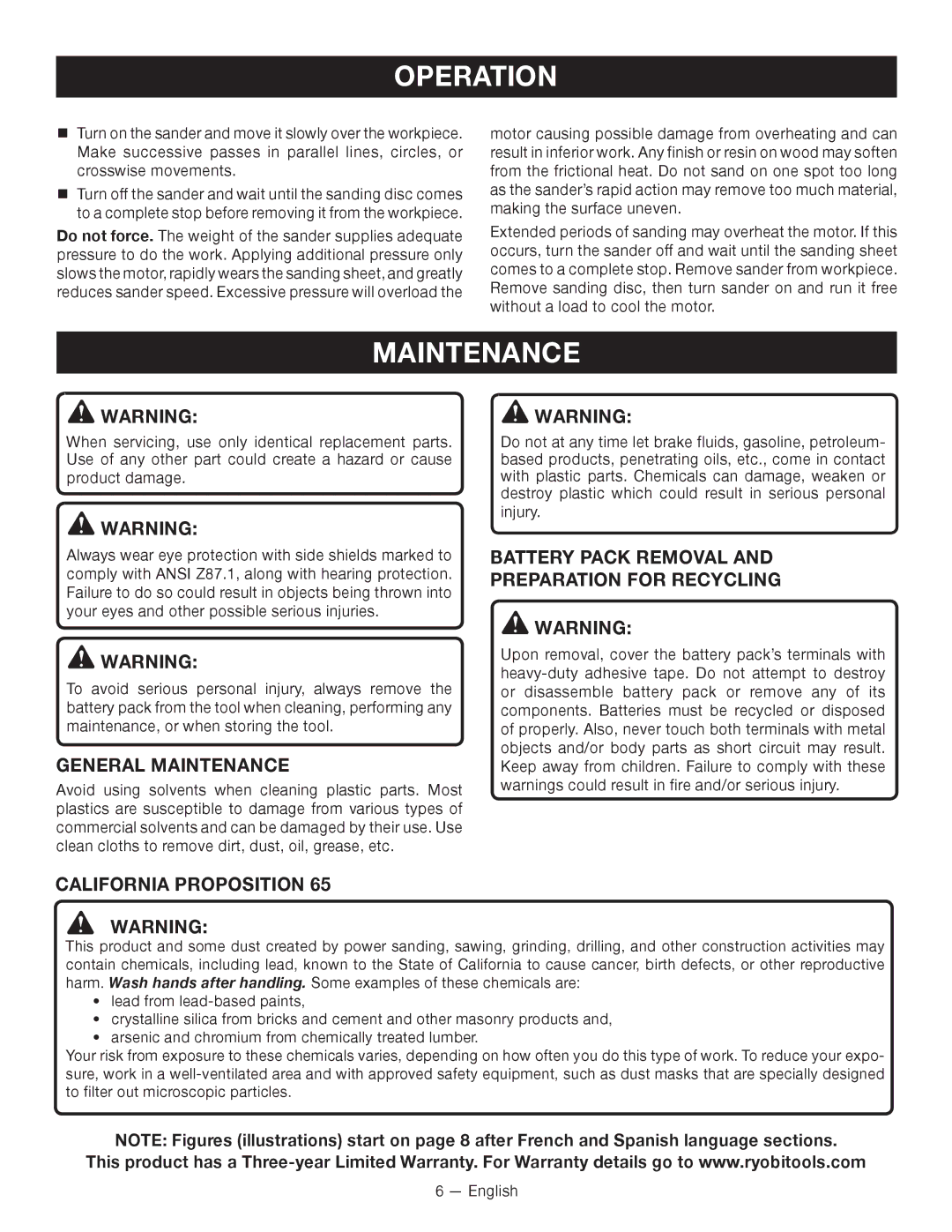
OPERATION
Turn on the sander and move it slowly over the workpiece. Make successive passes in parallel lines, circles, or crosswise movements.
Turn off the sander and wait until the sanding disc comes to a complete stop before removing it from the workpiece.
Do not force. The weight of the sander supplies adequate pressure to do the work. Applying additional pressure only slows the motor, rapidly wears the sanding sheet, and greatly reduces sander speed. Excessive pressure will overload the
motor causing possible damage from overheating and can result in inferior work. Any finish or resin on wood may soften from the frictional heat. Do not sand on one spot too long as the sander’s rapid action may remove too much material, making the surface uneven.
Extended periods of sanding may overheat the motor. If this occurs, turn the sander off and wait until the sanding sheet comes to a complete stop. Remove sander from workpiece. Remove sanding disc, then turn sander on and run it free without a load to cool the motor.
MAINTENANCE
![]() WARNING:
WARNING:
When servicing, use only identical replacement parts. Use of any other part could create a hazard or cause
product damage.
![]() WARNING:
WARNING:
Always wear eye protection with side shields marked to comply with ANSI Z87.1, along with hearing protection. Failure to do so could result in objects being thrown into your eyes and other possible serious injuries.
![]() WARNING:
WARNING:
To avoid serious personal injury, always remove the battery pack from the tool when cleaning, performing any maintenance, or when storing the tool.
GENERAL MAINTENANCE
Avoid using solvents when cleaning plastic parts. Most plastics are susceptible to damage from various types of commercial solvents and can be damaged by their use. Use clean cloths to remove dirt, dust, oil, grease, etc.
![]() WARNING:
WARNING:
Do not at any time let brake fluids, gasoline, petroleum- based products, penetrating oils, etc., come in contact with plastic parts. Chemicals can damage, weaken or destroy plastic which could result in serious personal
injury.
BATTERY PACK REMOVAL AND
PREPARATION FOR RECYCLING
![]() WARNING:
WARNING:
Upon removal, cover the battery pack’s terminals with
California Proposition 65
WARNING:
This product and some dust created by power sanding, sawing, grinding, drilling, and other construction activities may contain chemicals, including lead, known to the State of California to cause cancer, birth defects, or other reproductive harm. Wash hands after handling. Some examples of these chemicals are:
•lead from
•crystalline silica from bricks and cement and other masonry products and,
•arsenic and chromium from chemically treated lumber.
Your risk from exposure to these chemicals varies, depending on how often you do this type of work. To reduce your expo- sure, work in a
NOTE: Figures (illustrations) start on page 8 after French and Spanish language sections.
This product has a
6 — English
